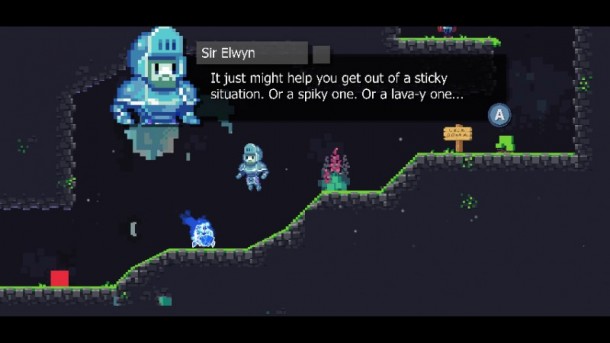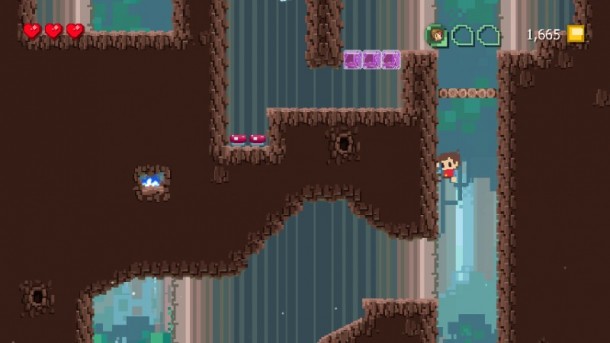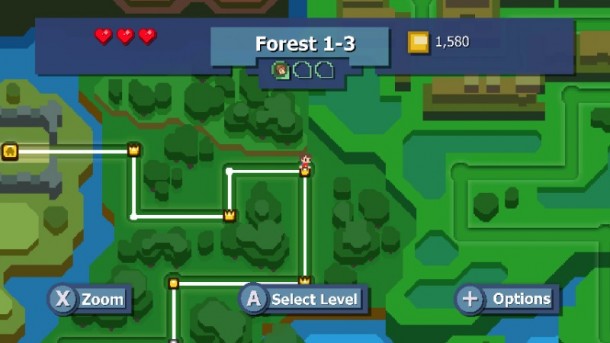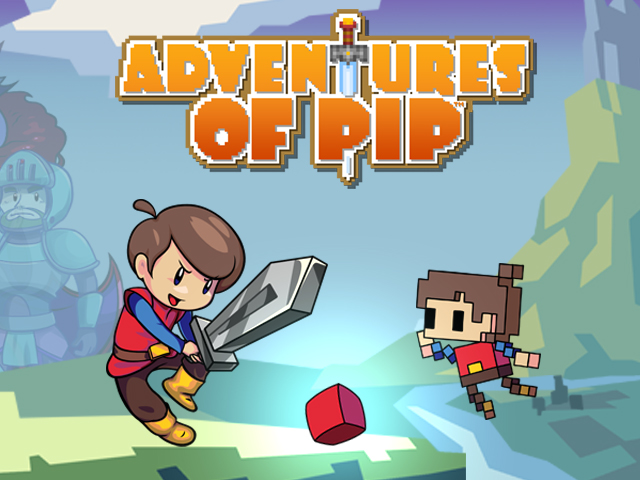I adore when a game uses different aspects of its design to create a holistic experience. You see that a lot with horror games and audio, or even 3D games and the use of background space (I’m looking at you, Mutant Mudds). In an age where games can easily be pigeonholed as looking too “Unreal” or “Unity”, it’s refreshing when one comes along that makes the visuals an actual element of focus and not just a sheen.
Adventures of Pip does that. Sure, it’s another retro-styled platformer soaked in an 8-bit style, but the art direction is essential to understanding and utilizing specific mechanics within. It takes an entire Eighties and early Nineties gaming genre, throws it into a bowl and mixes it all together. In fact at times it feels like we’re reliving that decade of gaming all at once. And that’s a pretty good thing.

Pip‘s central hook brings plot, visuals and mechanics together in a nice, unique way. Throughout the levels, the hero — Pip, of course — can transform from a single block to an 8-bit character, to a 16-bit hero. This evolution happens at ease; evolving down a generation involves a button press, evolving up requires defeating specific (and plentiful) enemies. Each of the three forms has different properties that reflect the era of gaming. Pixel Pip is floaty and lightweight and can fit into small areas. 8-bit Pip can wall jump and punch, but his size prevents access to some areas. The 16-bit Pip can equip swords and attack better, and has more weighty physics, but lacks some of the abilities of the others.
The levels themselves require active switching between the three forms to access secret areas, solve puzzles, or defeat enemies. Switching between the three pauses the game, too, so there’s a sort of tactical advantage to doing so. In other similar platforming games we’re usually given a team of characters that we switch between, but it’s a slower, more deliberate process. In Adventures of Pip transitioning between all of the forms is quick and effortless, and often becomes as second nature as jumping.

The game’s plot ties into the retro theme as well. Pip becomes the hero of a pixel kingdom when the normally heroic princess (and everyone else in the land, it seems) is captured by an evil sorceress. He’s the only one left, and as he traverses the world he encounters ghosts that give hime advice and skills, and the occasional jab at his stature. Pip starts as a happy pixel block, oblivious and unassuming of the 16-bit world around him. As he explores he evolves, but we always get the feeling that he’s happy with just four sides.

The game features levels placed on a linear overworld, reminiscent of the 16-bit era of gaming. Each of the levels has three villagers hidden throughout, and collecting them not only plops them into the castle town but also gives us a rating for our work, almost like the “star” scoring system in modern games. Though there are plenty of secret alcoves and treasure chests to find, the usual loot is just the in-game currency, and in amounts small enough that it never really drives us to go searching for it. That, along with levels that don’t really stretch the imagination, are probably the only drawbacks to the game’s design. At times the puzzles seem stuck between being open to problem-solving any way we’d like or being forced into one type of resolution.
But it’s still fun, and the relative linearity and ultra-lite RPG elements allow for short, controlled play sessions if desired. The bountiful placement of evolution-fueling Bitstream and the in-level save points make failing an afterthought. We fall to our deaths often, but there’s no real reason to fear that.
Adventures of Pip is an easy game to digest. It has bright, poppy visuals, a retro-inspired story and art direction, and touches of modern gaming that mesh together really well. It’s friendly enough that we never feel aggravated by difficult puzzles. Thankfully, the endearing little pixel block is able to keep us smiling throughout his adventures, the hallmark of a successful retro experience.
This review is based on a Wii U eShop code sent to SideQuesting by the publisher


No Comments